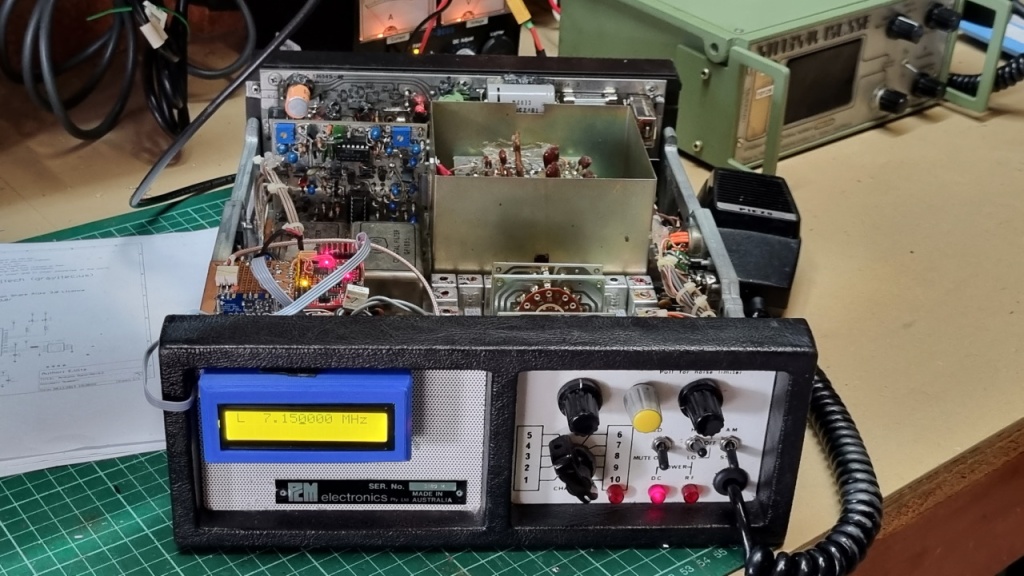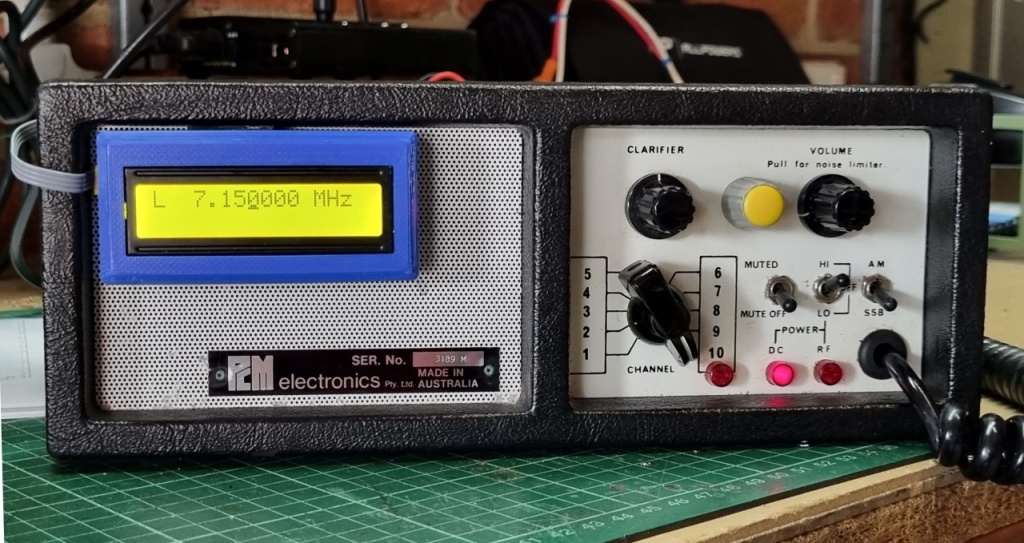The PCM Kestrel is a HF transceiver from the 1970s that was intended for marine applications and made here in Oakleigh, Victoria. There is also a Hawk version that was targeted at land base applications.
This particular one is a 131-12, which designates the 130 Watt, 12 Volt version. It was picked up at an EMDRC market day in March this year along with a rugged HF antenna. Despite being a Kestrel marine unit, it was channelised for Royal Flying Doctor Service (RFDS) frequencies along with the matching antenna.
The radio is very large by today’s standards, but this makes it very easy to work on with all the components readily accessible. There is also a fair bit of space for add ons, like a digital VFO, which is the main subject of this post.
I came across a nice well documented VFO conversion that was done by VK3ZYZ(ref 1). As I was faced with a weekend of lockdown due to Covid, building up a VFO seemed like a nice way to pass the time.
As traveling to Jaycar to get an Arduino Nano was out of the question, I found an old Ardupilot board from a drone project and pressed this into service as the controller. An Si5351 clock generator board was cannibalised from an old QRP project.
The whole thing was put together on a piece of blank PCB and some bits of stripboard where things needed to be stood off from ground. The radio itself is intended for operation between 2 and 12 MHz according to the manual. The plan is to have it working on 160m, 80m, 40m and 30m. It may work on 20m to be investigated later.
The radio has a rather impressive multi ganged rotary switch the almost extends the depth of the radio and is used for selection of crystals, receiver preselector/transmit amplifier, transmit PA low pass filter and some logic for selection of modes.
The Kestrel is a upper side band radio only which initially looked like a challenge for 80 and 40m, but it turns out that the radio has a lower side band crystal filter and the sideband is mirrored by the high side injection of the local oscillator. Operation on lower sideband is possible by using low side injection of the local oscillator. The only problem here is that on 160m, low side injection results in a very low local oscillator frequency and hence, image rejection problems. Not to worry, 160 will be AM only.
So far it’s working nicely on three bands but the VFO is rather untidy. I will probably make a PCB for the VFO to tidy it up.
There is not much space for the VFO display on the front panel, so for the moment it’s partially obscuring the speaker. The rotary encoder is between the clarifier and volume knob, it has the yellow knob top below. I am looking for a more compact display to replace the temporary one below.


Ref 1: http://www.sadarc.org/xenforo/upload/index.php?threads/pcm-hawk-arduino-vfo.36/

Pingback: Kestrel Shortwave (HF) Transceiver | Matthew Parij